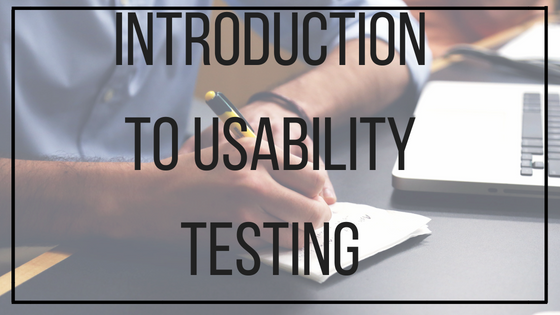Introduction To Usability Testing

Usability testing is an easy step to overlook while developing or redesigning your website. After putting hard work into creating something you are certain your customers and potential customers will love, getting someone else to evaluate it can slip your mind. However, it is easy to let little mistakes slip past you, no matter how much effort you’ve dedicated, and a fresh perspective can make a huge difference on ensuring that your website is at its full potential.
What is Usability Testing? Usability testing is a way to evaluate a user’s experience on your website. By testing the usability of your website, you can tell if your website is easy and practical for customers to use. Typically, a test is done where participants complete tasks on the website, while a researcher takes notes. This allows you to see where your website is clear and simple to use, and where you could make some changes.
What are the benefits of Usability Testing? There are some major benefits to usability testing. The first benefit is that is provides you with an unbiased and accurate examination of your website’s user experience. Typically the team running the assessment is detached from your company, so they are unbiased and coming in with a clear mind. It is a convenient way to measure how usable your website is, since all you need is a quiet room and someone taking notes. Usability testing is fairly quick to tell you the pros and cons of your website, making it easier to implement changes needed to improve. It can save you money, as you catch problems early on, allowing your website to be at its best from the start.
How to use Usability Testing: The first step to usability testing is to decide what part, or parts, of your website you want tested. Is there a page or feature you struggled designing or questioned? That might be a good place to start. If you have a pros and cons list before you start, usability testing can help you improve more quickly and accurately. Next, set goals for your participants. Think of common tasks that users will visit your website for. Make sure popular products contact information and FAQs are easy to access. Testing the checkout experience is often a good idea as well.
Your next step should be to create a script. Make everyone aware of their role in the usability testing, what the purpose is, what the tasks are, and some questions to determine how familiar participants are with your website previous to the study. To keep everything unbiased and consistent, use the same script with each participant and testing session. Once you have your script and plan, delegate the roles to all of the participants. The moderator will be running the session, and he or she needs to remain neutral. The moderators job is to make sure that the participants complete tasks and feel comfortable with what they are being asked to do. You will also need a note taker, so that you can keep track of all of the issues participants find, as well as what they liked.
After you have the script and roles set up for your usability testing, recruiting participants is the next step. This tends to be the most difficult step, as you are testing a small sample size to represent your whole user base. To find your ideal participants, create a buyer persona and reach out to customers that fit those guidelines. Offer them a discount or gift for participating in your usability testing. If they like your company enough to help you, they will be glad to get a reward of your product or service. Once you have your participants screened out,you are ready to conduct the study. While you are conducting the study, ask participants to complete tasks without your help. It is often beneficial to ask them to “think out loud” as well, so that you are able to hear their opinions as they navigate your website. After they complete a task, ask for feedback before moving on to the next task. This allows you to get the most accurate information. At the end offer them a survey letting you know what they liked and did not like, if they would recommend your product or service to a friend, and how difficult the tasks were to complete. Once you are done with the study, you will have a lot of qualitative data. Analyzing your data will help you pinpoint problem areas, especially if many participants report the same problems.
Although usability tests are a lot of work, they are a great way to have a quality website from the start. Having a wonderful product or service is simply not enough if your website does not live up to customer’s expectations. Letting others review and critique your website can be nerve wracking after you put in so much effort, but working as a team will help ensure that your website is up to its full potential.


